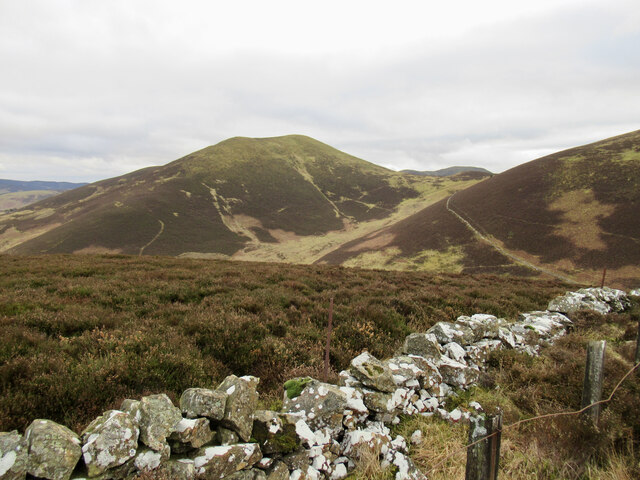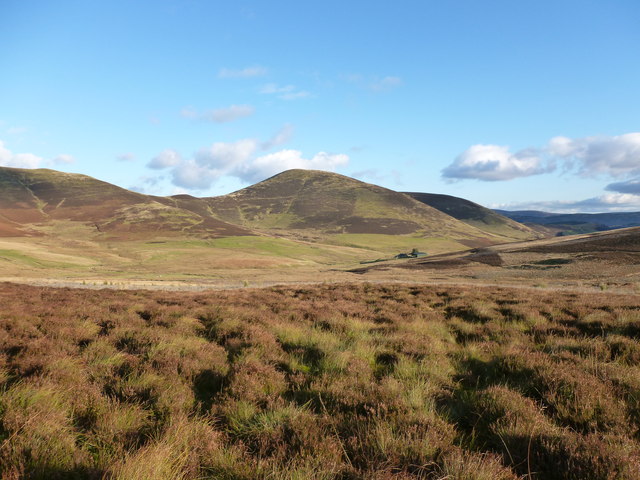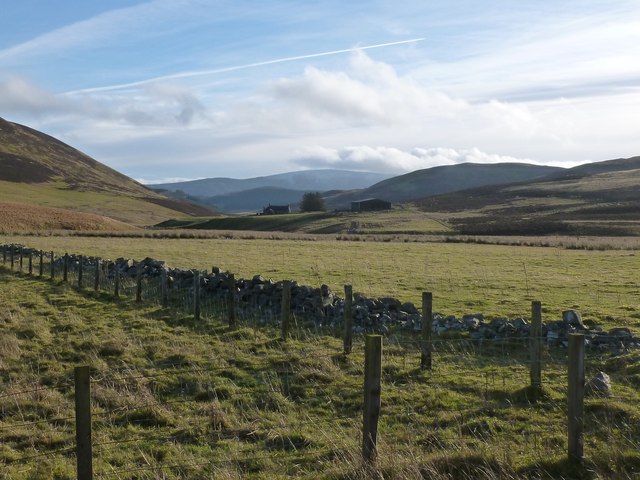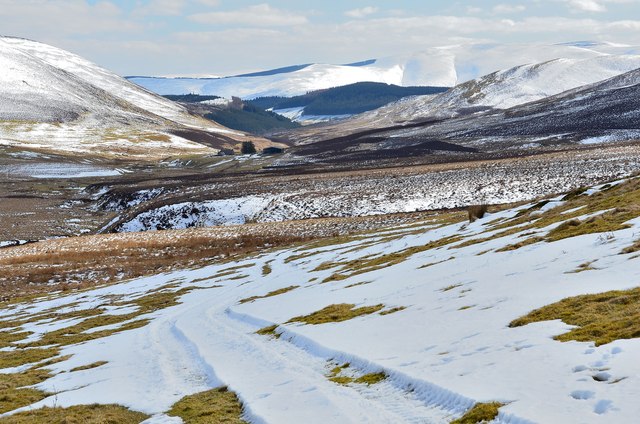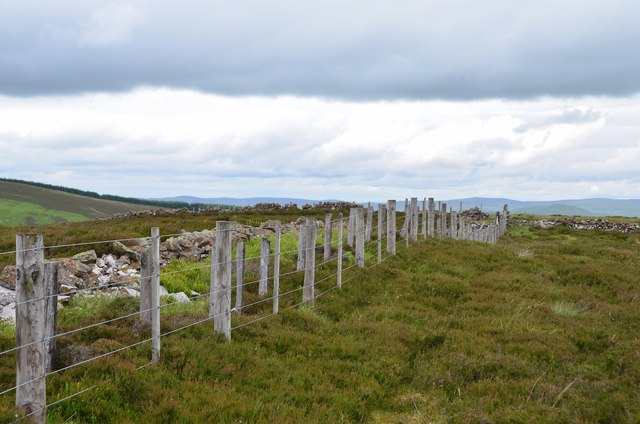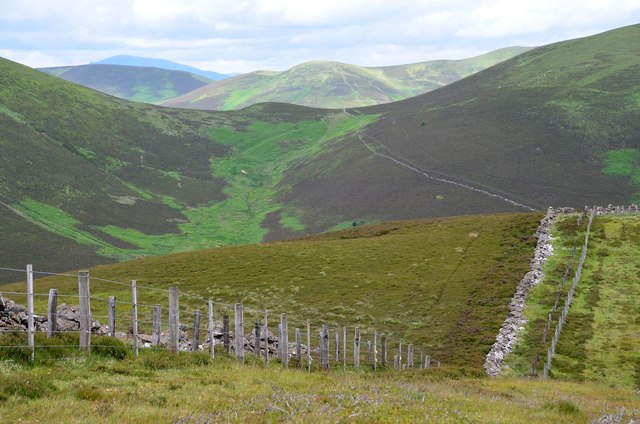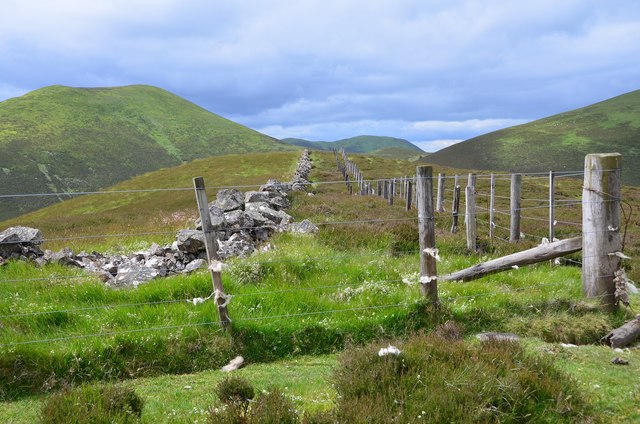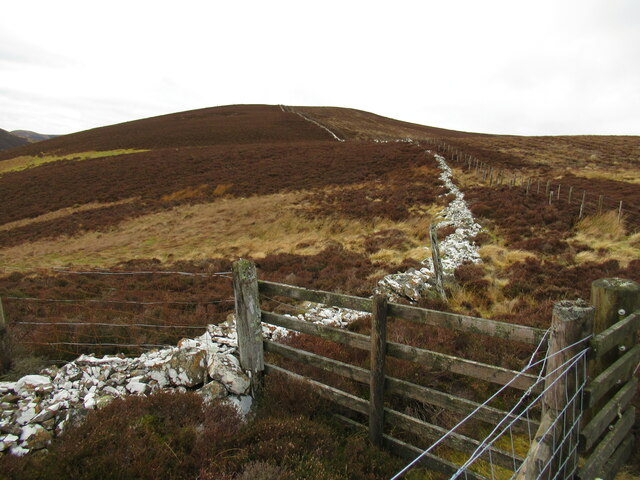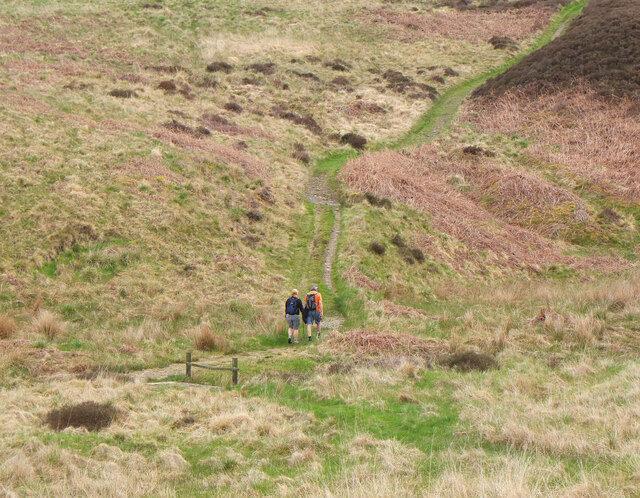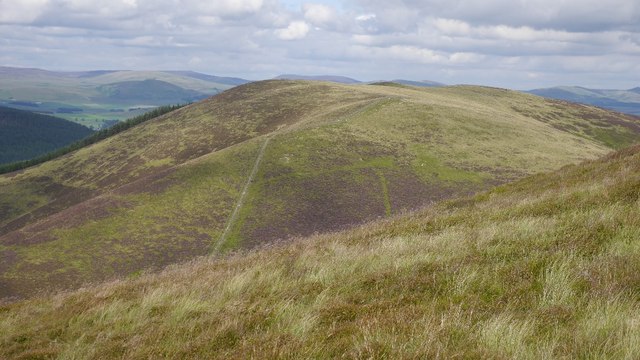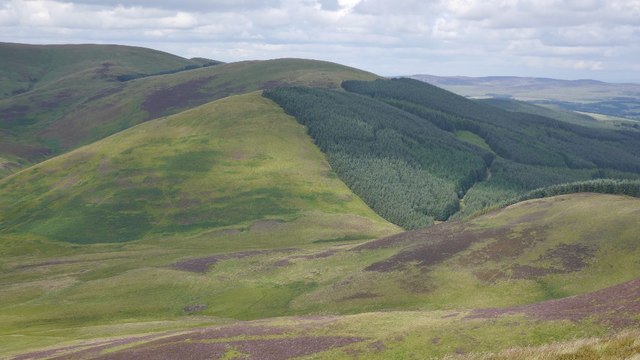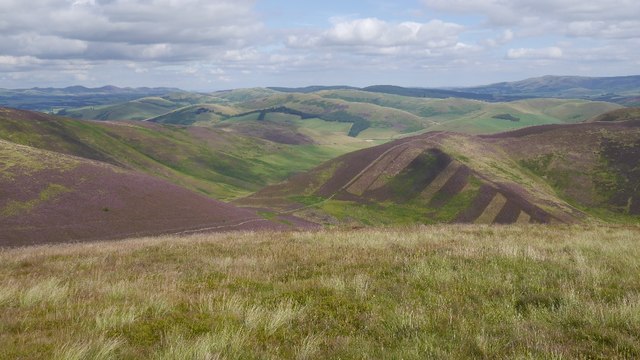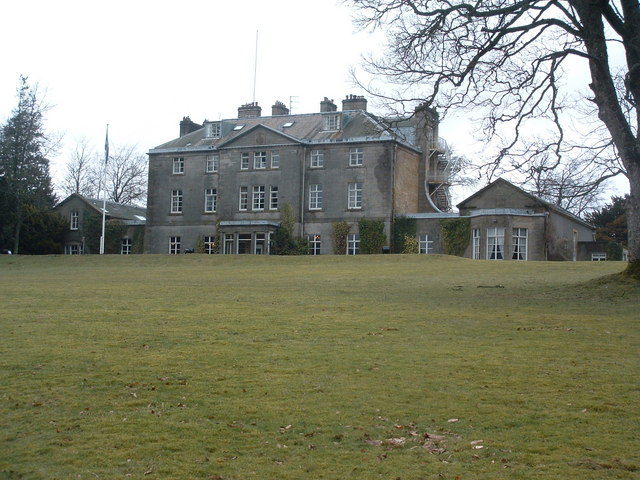Ladyurd Hill
Hill, Mountain in Peeblesshire
Scotland
Ladyurd Hill
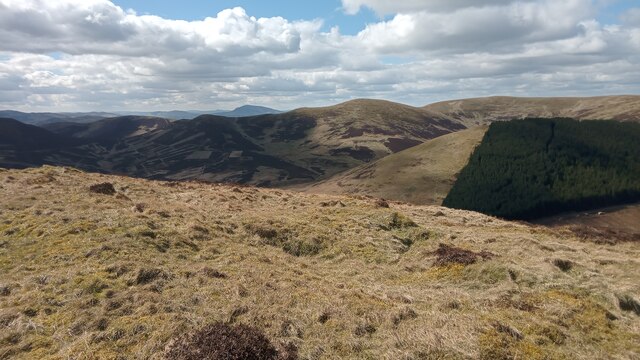
Ladyurd Hill is a prominent hill located in Peeblesshire, Scotland. Standing at an elevation of 509 meters (1,670 feet), it is part of the stunning Southern Uplands range. Ladyurd Hill is situated around 4 kilometers northeast of the town of Innerleithen, offering captivating views of the surrounding countryside.
The hill is easily accessible, with a well-defined path leading to the summit from the nearby village of Cardrona. The ascent is moderately challenging, featuring a mix of grassy slopes and rocky sections. Hikers are rewarded with breathtaking panoramas of the rolling hills, lush green valleys, and the winding River Tweed.
At the summit of Ladyurd Hill, there is a small cairn marking the highest point. On clear days, one can enjoy sweeping vistas of the nearby Cademuir Hill, Eddleston Water, and the Pentland Hills to the northwest. The hill also offers a unique perspective on the tranquil Scottish Borders region.
Ladyurd Hill is an ideal destination for nature enthusiasts, offering an opportunity to explore the beautiful Scottish countryside and encounter diverse flora and fauna. The surrounding area is home to various bird species, including red kites, merlins, and kestrels, making it a popular spot for birdwatching.
Overall, Ladyurd Hill provides visitors with a picturesque hike, stunning views, and a chance to immerse themselves in the natural beauty of Peeblesshire.
If you have any feedback on the listing, please let us know in the comments section below.
Ladyurd Hill Images
Images are sourced within 2km of 55.653698/-3.3523013 or Grid Reference NT1540. Thanks to Geograph Open Source API. All images are credited.

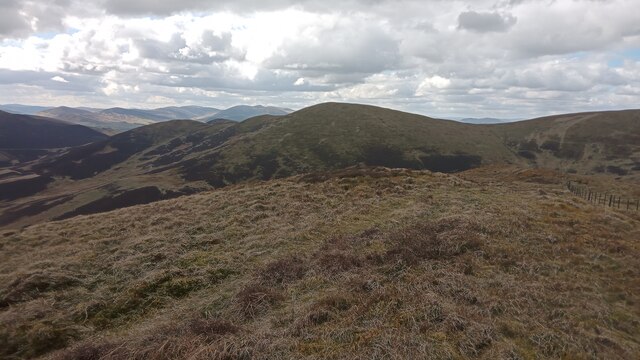
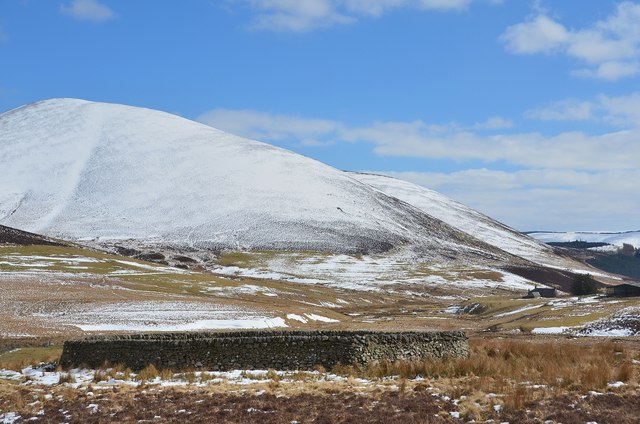
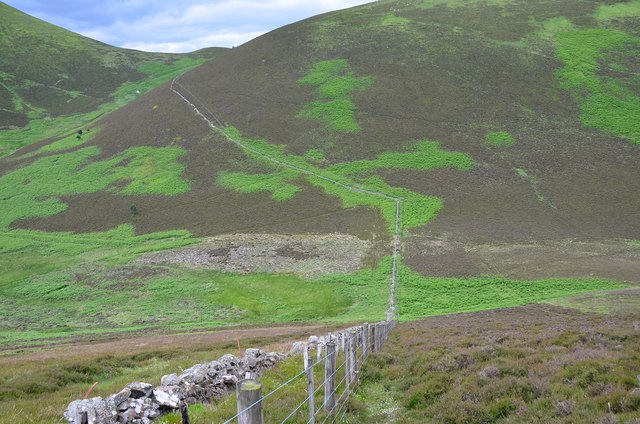
Ladyurd Hill is located at Grid Ref: NT1540 (Lat: 55.653698, Lng: -3.3523013)
Unitary Authority: The Scottish Borders
Police Authority: The Lothians and Scottish Borders
What 3 Words
///ideals.litters.addicted. Near Peebles, Scottish Borders
Nearby Locations
Related Wikis
Tarth Water
The Tarth Water is a river in Peebleshire, in the Scottish Borders. It forms part of the River Tweed system. The river with a total length of 7.1 miles...
Drochil Castle
Drochil Castle is a ruined castle in the Scottish Borders. It is located above the Lyne Water, 10 kilometres (6.2 mi) north-west of Peebles, and 8 kilometres...
Battle of Happrew
The Battle of Happrew was a skirmish which took place around 20 February 1304, during the First War of Scottish Independence. A chevauchée of English knights...
Castle Craig Hospital
Castle Craig Hospital is a private residential drug and alcohol rehabilitation clinic. It is located in Peeblesshire, Scotland. Castle Craig is an 18th...
Kirkurd
Kirkurd is a parish in Peeblesshire in the Scottish Borders situated 3 miles south-east of Dolphinton and 6 miles north-east of Broughton. Tarth Water...
Lyne Kirk
Lyne Kirk is an ancient and historic kirk or church, of the Church of Scotland. It is situated on top of a mound adjacent to the A72 trunk route 4.5 miles...
Stobo Kirk
Stobo Kirk is an ancient church of the Church of Scotland. It is dedicated to St Mungo and is situated near the B712 off the A72 just 6 miles south-west...
Upper Tweeddale National Scenic Area
The Upper Tweeddale National Scenic Area lies in the Borders region of Scotland. It is one of 40 national scenic areas (NSA) in Scotland, which are defined...
Nearby Amenities
Located within 500m of 55.653698,-3.3523013Have you been to Ladyurd Hill?
Leave your review of Ladyurd Hill below (or comments, questions and feedback).
